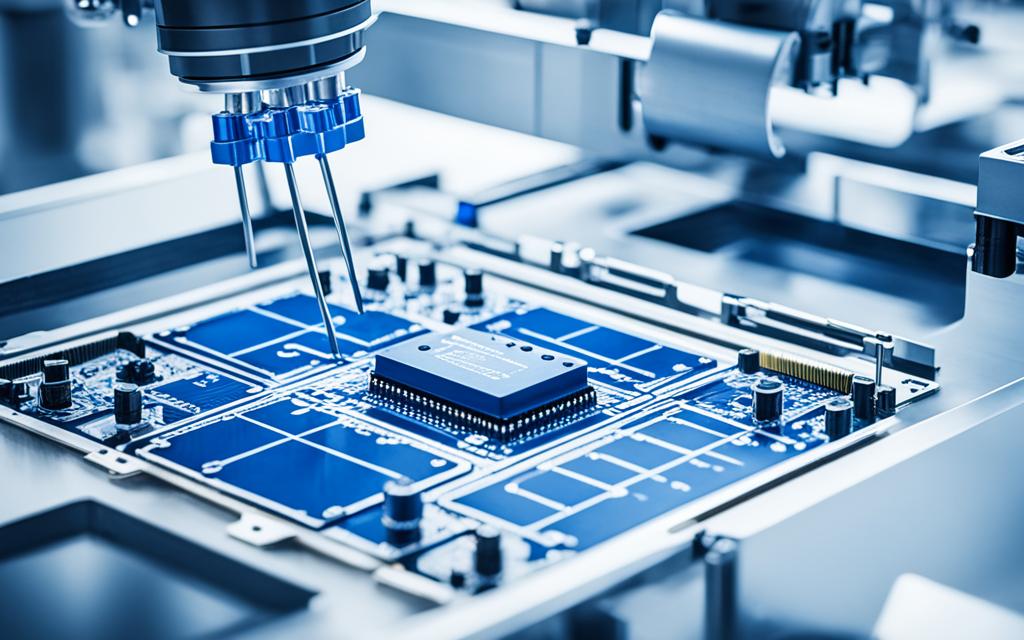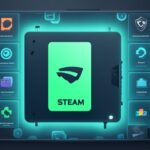Table of Contents
Building your own SSD is a smart and affordable option, especially for tech enthusiasts. An external SSD performs better and lasts longer than traditional hard drives. By following clear steps and knowing the key parts, you can cut costs, enhance speed, and have a storage device that fits your needs. This guide will walk you through the journey of making your solid-state drive.
For additional tips on making your external SSD, check out this helpful link. It explains the great benefits you can gain in performance. SSD enclosures are available online, with prices between $10 and $501. By choosing the right parts and using USB 3.2 Gen 2 ports, speeds can reach about 1GBps with NVMe drives1.
Key Takeaways
- It’s vital to understand the necessary parts for assembling an SSD.
- Your choice between SATA and M.2 NVMe drives affects speed.
- External SSDs are more resilient under various conditions.
- Correct formatting is critical for making your SSD work perfectly.
- Choosing the right components leads to increased performance.
Understanding Solid-State Drives
Solid-state drives, often called SSDs, have changed the way we store and get to data. Using flash memory, they offer much faster access and speed than older hard disk drives (HDDs). SSDs don’t have moving parts. This means they’re more reliable and can handle drops and bumps better2. Knowing about SSDs and how they boost computer performance is crucial for anyone wanting a better computing experience.
What is an SSD?
An SSD stores data using flash memory, leading to much quicker start-up and response times3. They’re perfect for tasks needing lots of fast data reads and writes. SSDs are more robust and energy-saving than HDDs, as they lack mechanical parts that can fail4.
Benefits of SSDs Over Traditional Hard Drives
SSDs have several advantages. They cut down on read/write times, making apps and files open faster3. With NVMe technology, SSDs can reach read speeds over 3000 MB/s, surpassing older SATA tech2. They also use less power, giving laptops longer battery life. Thanks to having no moving parts, they’re quieter and last longer than HDDs4.
Types of SSDs Available
There are different types of solid-state drives for various needs. The most common include:
- 2.5-Inch SATA SSDs: These are great for easily upgrading laptops and desktops.
- M.2 NVMe SSDs: They offer top performance and connect straight to the motherboard for the fastest speed.
- PCIe-based Flash SSDs: With high speed, these are perfect for gaming and professional work.
- Hybrid Drives: These mix SSD and HDD technology for a good balance of speed and storage.
When building a PC, picking the right types of solid-state drives is key for the best performance.
Essential Components for Building an SSD
Building a top-quality SSD means knowing the vital parts needed. You need to choose the best SSD case and figure out the best types of drives. It’s essential to consider various factors for the best performance.
Choosing the Right SSD Enclosure
Choosing the right SSD case is the first step to a great SSD. It’s the shell that holds your drive, providing connectivity and protection. Prices vary, ranging from £10 to £50, based on the model and its features. Look for cases that allow for good heat removal. They should also fit both SATA and M.2 drives. A good enclosure keeps your SSD working well for longer.
Types of Drives: SATA vs M.2 NVMe
SATA drives offer steady performance for everyday tasks. Older SATA 2 SSDs have speeds around 280 megabytes per second (MB/s). But, the newer SATA 3 drives can reach up to 550MB/s. This is almost twice as fast as their older versions5. M.2 NVMe drives, however, provide superior speed. They can transfer data faster than 1GBps in the right conditions. Their speed makes M.2 NVMe drives perfect for tasks needing quick responses.
Factors to Consider When Selecting Components
When choosing components, think about speed and storage space. It’s best to use up to 75 percent of your SSD’s storage. This keeps the drive running smoothly6. Balancing the drive’s speed and its cost matters too. Buying bigger SSDs can be more cost-effective in the long run. Also, make sure your system supports your SSD’s connection type. This ensures you get the most out of your SSD.
How to Make an SSD
Making your own SSD might sound daunting. Yet, with a good SSD assembly guide, it’s quite straightforward and fulfilling. We’ll guide you through the key steps to assemble and format your SSD. This ensures it’s ready to be set up.
Step-by-Step Assembly Guide
Firstly, get your SSD enclosure ready. Avoid static electricity by touching something grounded. Open the enclosure and angle your SSD at 15 degrees to insert it. Secure it with the screw provided. Then, put the cover back on and connect the USB cable. If you seek faster performance, consider a Thunderbolt 3 enclosure. It can cost around $180 but offers speeds up to 40 Gbit/s, making it perfect for high-speed needs7.
Formatting and Setting Up Your SSD
Formatting makes your SSD ready for use. If on Windows 10 or 11, open Disk Management to start. There, your new drive will show as unallocated. Here’s what to do next:
- Create a new simple volume.
- Follow directions to partition the SSD.
- Opt for the GUID Partition Table (GPT) for your partition style. It supports over 2 TB volumes and works with UEFI-based systems8.
- Finish the formatting to prepare the SSD for storing files.
By setting up your SSD this way, you boost performance and lower loading times. Apps run much faster compared to traditional HDDs, which can be 10 times slower9.
Performance Considerations
To really grasp SSD performance, you need to look at speeds and the connections they use. The right kind of connection can push your SSD to amazing speeds. For instance, NVMe drives using the PCIe bus can reach up to 7,000MB/s. This is way faster than traditional SATA connections, which can’t keep up10. It’s also key to keep at least 10% of your SSD free. This space helps it run smoothly and last longer, by letting the system do necessary background tasks10.
Understanding SSD Speeds and Connectivity
Choosing the right connectivity, like USB 3.1 Gen 2 or Thunderbolt 3, can really unleash your SSD’s speed, going beyond 2000MBps. On the other hand, sticking with USB 3.0 could slow things down10. The performance of an SSD isn’t just about the connection. It’s also about things like the system it’s in and the kind of storage it uses11. For example, SSDs that use single-level cell technology are quicker than those using multi-level cell technology, showing how different types can vary in speed11. When picking your SSD setup, it’s important to go for what meets your speed needs and to have good cooling to stop it from getting too hot10.
Testing Your SSD: Benchmarking Tools
Checking your SSD’s speed is a must to see if it lives up to what’s expected. Using tools like CrystalDiskMark can help you measure its read and write speeds. This tells you if your SSD is performing well or if it needs some tweaks. Keeping an eye on how much it’s being used and managing data wisely can also help your SSD last longer. Trying to move frequent writes to RAM can lower the chance of it wearing out too soon12.
By thoroughly testing your SSD and knowing the best connectivity options, you can make sure it runs as well as you need. This is true whether you’re using it for yourself or for business needs that demand strong data management.
| SSD Type | Read Speed (MB/s) | Write Speed (MB/s) | Interface |
|---|---|---|---|
| SATA SSD | 550 | 520 | SATA III |
| NVMe SSD | 7000 | 7000 | PCIe 4.0 |
| Kingston FURY Renegade | 7300 | 7000 | PCIe 4.0 NVMe |
Conclusion
Making your own SSD offers many advantages, providing storage that meets your unique needs. This process might seem difficult at first. Yet, with proper guidance, creating a top-performance storage unit becomes achievable. These DIY SSDs offer faster startups and quicker application loads, an upgrade over regular hard drives13.
SSD technology is improving our tech use, especially for updating old computers. For example, adding an SSD boosts machines with Athlon 64 X2 or Core processors remarkably. Also, SSDs are more efficient than traditional drives, making them perfect for saving energy1314.
Putting time into building an SSD is rewarding, not just for better performance. It also brings joy through customising your technology. With plenty of parts to choose from, creating an SSD changes how you view speed and dependability in storing data. Starting this journey today prepares you for a faster digital future14.
FAQ
What is the lifespan of an SSD compared to a traditional hard drive?
SSDs usually last longer than hard drives. They don’t have moving parts, which makes them more robust. This means they can handle more work and are a better choice for storing data for a long time.
Can I use an SSD with an older computer?
Yes, you can use an SSD with an old computer. Your system needs to support the SSD’s type and interface. You may need a special enclosure for it to connect via USB. Or, adaptors for older SATA connections might be needed too.
Will building my SSD void any warranties?
Building your SSD usually won’t affect warranties on parts like the SSD or enclosure. But, if you’re changing a pre-made SSD, check the maker’s warranty details first.
What tools do I need to build an SSD?
You need a simple toolkit to make your SSD. Get a screwdriver, an anti-static wrist strap to avoid damaging it with static electricity. Also, you need a computer that can connect to the SSD to format and set it up.
How do I migrate data from an existing hard drive to my new SSD?
Use cloning software to move data to your SSD. Make sure the new SSD can hold all your data. Follow the software instructions carefully for a smooth data transfer.
Are there specific brands of SSDs you recommend for building my own?
Samsung, Western Digital, and Crucial are good brands. They’re reliable and perform well, offering options for different needs. Choose one that fits what you want.
Is it possible to upgrade my SSD capacity later on?
Yes, you can upgrade your SSD later. If your enclosure can fit larger SSDs, you can switch to one with more capacity. Always back up your data first.
What are the signs that my SSD may be failing?
You might see your computer crash often, or it’ll be slow. Trouble with reading or writing data is a bad sign too. Back up your data right away. Consider getting a new SSD.
Source Links
- https://www.pcworld.com/article/393987/how-to-build-your-own-high-performance-portable-ssd.html – How to build your own high-performance portable SSD
- https://www.ibm.com/topics/solid-state-drives – What Is a Solid-State Drive? | IBM
- https://www.techtarget.com/searchstorage/definition/SSD-solid-state-drive – What is an SSD (Solid-State Drive)?
- https://www.crucial.com/articles/about-ssd/what-is-an-ssd – What is an SSD (Solid State Drive)?
- https://www.thessdreview.com/ssd-guides/beginners-guide/ssd-components-and-make-up-an-ssd-primer/ – SSD Components and Make Up – An SSD Primer – The SSD Review
- https://www.pcworld.com/article/444461/the-ultimate-guide-to-proper-ssd-management.html – The ultimate guide to proper SSD management
- https://www.cameralabs.com/how-to-build-the-fastest-portable-ssd/ – Build the fastest portable SSD
- https://www.makeuseof.com/how-to-initialize-ssd-windows-10/ – How to Initialize an SSD in Windows 10
- https://www.backblaze.com/blog/ssd-upgrade-guide/ – How to Upgrade Your Computer: Migrating from HDD to SDD
- https://www.kingston.com/en/blog/pc-performance/extend-ssd-lifespan-boost-performance – SSD Longevity – 5 Tips for Getting the Most out of Your New SSD
- https://www.techtarget.com/searchstorage/feature/The-truth-about-SSD-performance-benchmarks – A primer on SSD response time, other performance benchmarks | TechTarget
- https://askubuntu.com/questions/1400/how-do-i-optimize-the-os-for-ssds – How do I optimize the OS for SSDs?
- https://www.tomshardware.com/reviews/ssd-upgrade-hard-drive,2956-10.html – Could An SSD Be The Best Upgrade For Your Old PC?
- https://www.tomshardware.com/reviews/ssd-hard-drive,1968-12.html – Flash SSD Update: More Results, Answers








